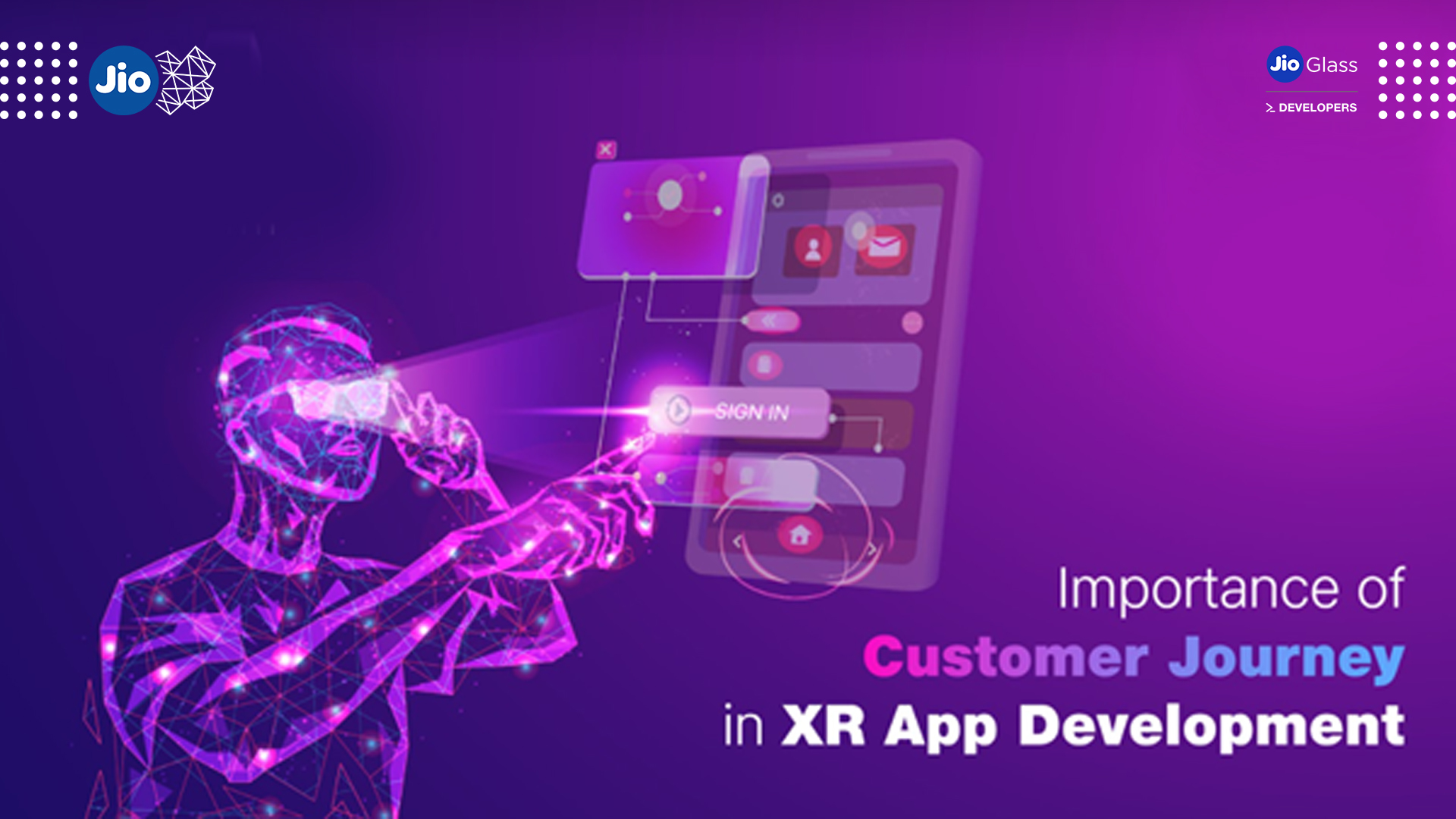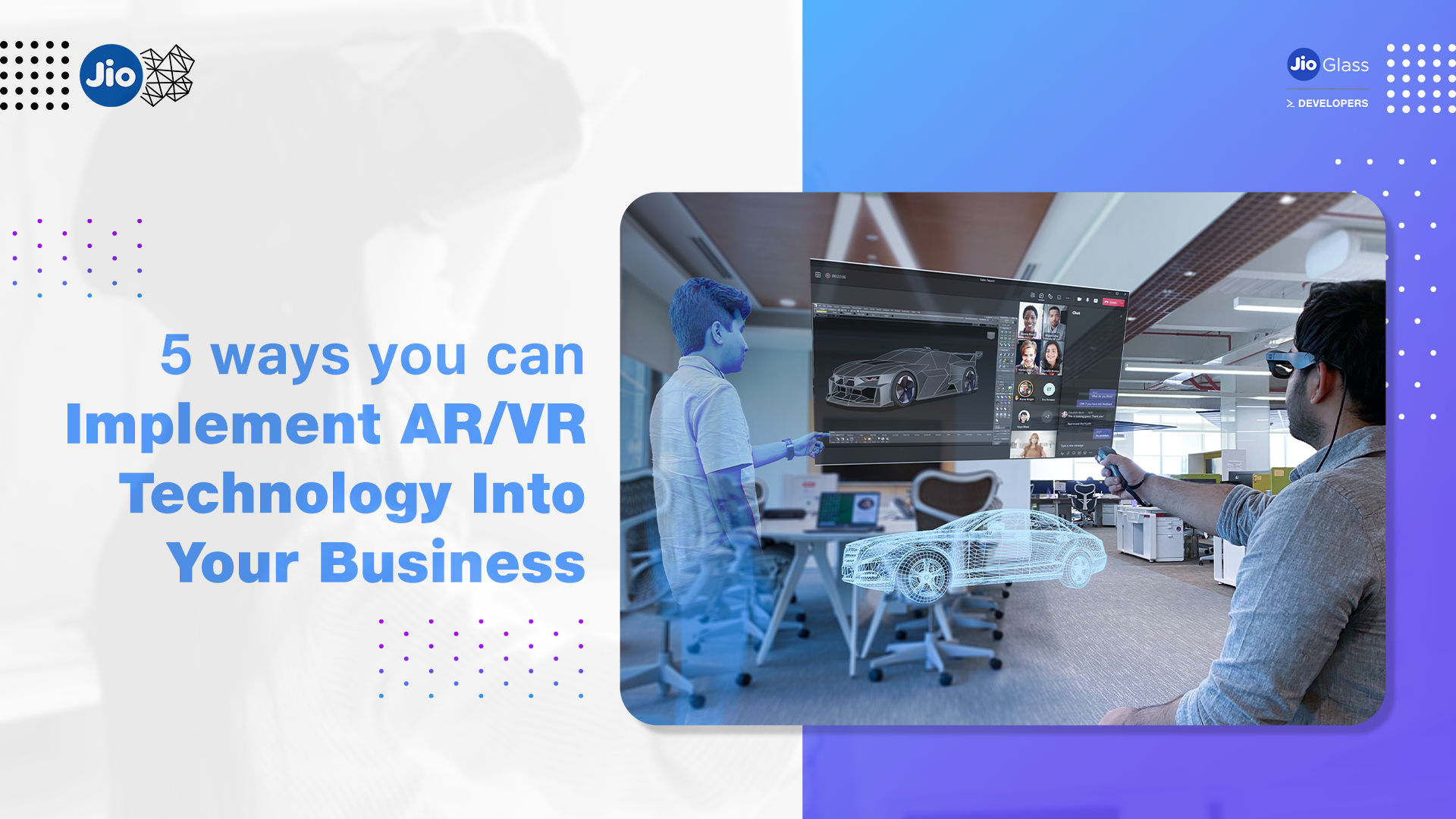Importance of Customer Journey in XR App Development

Extended Reality (XR) offers comprehensive coverage to Augmented Reality (AR), Mixed Reality (MR), and Virtual Reality (VR). The VR/AR/MR product space collectively refers to “Digital Reality,” which opens up the development of human-computer interaction.
Mixed reality technology aims at transforming digital platforms and experiences in various sectors like entertainment, retail, education, gaming and healthcare. You can change routine tasks like shopping, learning, training, and working remotely with collaborative and interactive elements. Therefore, making the whole experience more immersive and delightful for customers.
To succeed in the competitive marketplace today, it’s the customer experience that sets you apart. Outstanding customer service starts with a clear communications strategy. Hence, you embark on a journey with the customer.
What is the Customer Journey?

Here is a visual that defines a person walking through several steps to accomplish a goal. The journey tells us who the users are, their goals and expectations from the products, and the steps users need to achieve.
Customer journey is an amalgamation of the overall experience of an organization. It covers customer interactions across channels, devices, and touchpoints at every stage of the life cycle — from awareness to loyalty.
“Armed with advanced analytics, customer-experience leaders gain rapid insights to build customer loyalty, make employees happier, achieve revenue gains of 5 to 10%, and reduce costs by 15–25% within two or three years.- (McKinsey).”
How can Developers contribute to the Customer Journey?
The intended goal of XR apps is to create delightful experiences for customers. Customer Journeys is a methodology guided by four distinct principles:
· Understand the customer’s mindset throughout the app’s development and improve each step of your customer journey.
· Attach insights to every phase of your customer journey digitally, and analyze your data.
· Be honest about building features based on how you can support specific actions vs. building features from abstract ideas.
· Always think about which personas will be using your app so you can design what they need.
Customer Journey communicates the intended flow of a user through various pages and actions in an app. It makes it easier to discuss the platform’s design and functions with all stakeholders involved in the app development process.
Gaining Insights into the Customer Journey
Customer journey clarifies what actions require focus — for example, communicating design to stakeholders with a demonstrated interactive piece of features like adding meaningful simulation and animation elements to gain valuable feedback.

The wireframe model helps bring the visual design followed by interaction modules to go in development. The customer feedback in response to the user acceptance test and scores are taken in the customer journey to address the iterations.
Example screens of customer journeys:
The preliminary flow of user tasks occurs in the application’s Alpha stage. It should subsequently follow the rest of the functions and features improvisation such as level design, character selection screen, environment selection screen, other assets, and features later.
1. Sign-up or Login Page — steps on tasks in login workflow.
2. Home Page — actionable access to features.
3. Search Page — find/fetch features in the application
A well-mapped customer journey highlights the entries and exits, how the system acts, and its connection with the user’s interactions. The development process also becomes easy by clarifying the how’s and why’s behind the development decisions.
Pots of Customer journeys: Task Flows and Wire Flows

The workflow begins with the customer’s entry point, e.g., on an onboarding screen or a landing page of the product or the web. It subsequently concludes with an action, such as signing up for an account or purchasing the product.
In the task flows type, users follow a linear path of tasks in sequence without any branching. Whereas in wire flow type, the tasks combine wireframe and flowcharts. Here the layout of the individual screen is used as an element within the storyboard in XR development.
Customer Journey Layout- Architecture and Framework

The layout in the flowchart provides entry and exit points, different system interactions, and user types. It serves as a discussion platform for deciding on the decision points, branching, etc.
Customer Journeys help break the product into sections and provide an interface overview. Creating a flow diagram at the beginning of the app development brings perspective for the long haul and helps map out the different scenarios that usually go unnoticed.
The best practice is to break the whole process into small chunks and tackle the granular tasks to arrive at actionable points.
Based on the requirements collected in new product initiation, a feature list is derived. The features are segregated based on the following factors:
1) Type
2)Pattern
3)Functionality
4)Similarities
The outcome includes the yield to a customer journey. The feedback by the stakeholders, mainly the customers, usually on a macro and high level, helps in assessing the features and fine-tuning the customer journey.
After deriving a bigger picture of requirements, the developers address the granular fragmentation representation in information architecture. Translating information architecture into a wireframe format gives design outcomes with testing functionalities.
Developers enhance the user’s needs and experience to become more seamless and collaborative by capturing the overall picture.
Interaction such as demos marks the culmination of customer journeys. The process breaks the user goals into user tasks. Each task is mapped with a product feature and addressed separately. Feature completion happens as a by-product of this process.
Model Outcomes
Customer journeys are essential in the application development process. By adopting these key actions, a developer can drive better experiences and outcomes for the users:
● Move approach from being feature-oriented to customer journey oriented.
● Shift in focus from business goals to user goals.
● Support integration of customer journey into application journey.
The JioGlass Developers Program is here to support developers building AR and VR applications for the next billion internet users. JioTesseract is working closely with its Developer Community to help build killer applications for India’s next big Mixed Reality Revolution #JioGlass.
Are you still waiting to be a part of the JioGlass Developers Community and get access to our exclusive Developers connect sessions?
Signup for the #JioGlass Developers Program! 👉 Click Here

